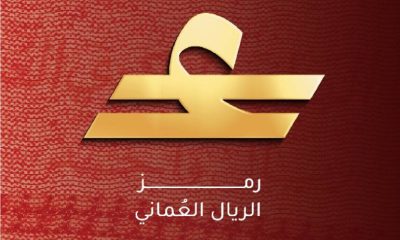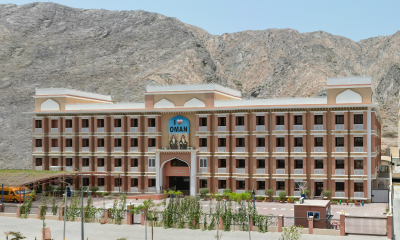News
Oman’s General Budget Deficit Stands At 13.5% At End Of Q3 Of 2020

The Sultanate’s general budget deficit increased by 58.5% at the end of the third quarter of 2020, to reach RO 2.4 billion, compared to RO 1.5 billion in the same period of 2019, constituting a ratio of 13.5% to the gross domestic product (GDP) at the current prices.
The data released by the National Centre for Statistics and Information (NCSI) on the Analysis of the Economic Situation in the Sultanate as at the end of third quarter of 2020 indicate that the total public revenue dropped by 24.4% at the end of third quarter of 2020, to hit RO 6 billion, compared to RO 7.9 billion for the same period of 2019.
The total public expenditure fell by 10.9% to reach RO 8.5 billion.
The data also show that the GDP at current prices declined by 16.5%, from RO 21.8 billion at the end of the third quarter of 2019 to RO 18.2 billion in 2020. This decrease is mainly attributed to the slump in total value added of oil activities from RO 7.7 billion at the end of the third quarter of 2019 to RO 5.8 billion in at the end of the third quarter of 2020.
This drop in the value added of oil activities is mainly attributed to a decrease in the value added of crude oil by 28.3% and the value added of natural gas by 3.5% to reach RO 1.15 billion at the end of the third quarter of 2020, compared to RO 1.19 billion for the same period of the previous year.
The report also points out that the value added of non-oil activities fell by 12.4% to reach RO 13.2 billion at the end of the third quarter of 2020. This decrease is attributed to the drop in value added of industrial activities by 19.8% and those of service activities by 10.6% while the value added of agricultural and fish field activities rose by 9.8%.
As for indicators of foreign trade, the NCSI data show that the surplus in trade balance at the end of the third quarter of 2020 decreased by RO 1.6 billion, compared to the same period of the previous year of 2019 when it stood at RO 2.7 billion. The decline in the surplus of trade balance is due to a drop in the value of merchandise exports by 21.5% at the end of the third quarter of 2020. The value of merchandise import decreased by 11%, to stand at RO 6 billion.
Indicators of the monetary situation within the NCSI report show that the total domestic liquidity (M2) at the end of the third quarter of 2020 rose by 11%, to reach RO 19.3 billion, compared to RO 17.4 billion in the same period of the previous year of 2019. The money supply (M1) increased by 13.4%, to stand at RO 5.7 billion.
Total deposits of the private sector at the end of the third quarter of 2020 grew by 9.5%, to reach RO 16.4 billion, compared to RO 15 billion in the same period of 2019.
The total value of loans and financing granted by commercial banks and Islamic windows at the end of the third quarter of 2020 rose by 2.1%, to stand at RO 26.4 billion, compared to RO 25.9 billion in the same period of 2019.
The total value of personal loans at the end of third quarter 2020 also increased by 0.5%, to reach RO 8.5 billion. The interest rate on total loans averaged 5.5%.
The total value of foreign assets in the Central Bank of Oman (CBO) at the end of the third quarter of 2020 fell by 1.4%, amounting to RO 6.5 billion, compared to RO 6.6 billion in the same period of 2019.
The purchasing power of the Omani Rial at the end of the third quarter of 2020 declined by 2% where the real exchange rate index scored about 104.0 points compared to 106.1 points in the same period of the previous year.
-

 Banking & Finance2 weeks ago
Banking & Finance2 weeks agoOman Oil Marketing Company Concludes Its Annual Health, Safety, Environment, and Quality Week, Reaffirming People and Safety as a Top Priority
-

 Economy2 months ago
Economy2 months agoMaal Card: What Oman’s New National Payment Card Means for Everyday Users
-

 News2 months ago
News2 months agoSheikh Suhail Bahwan, Chairman of Suhail Bahwan Group, Passes Away
-

 News1 month ago
News1 month agoOIG Appoints New CEO to Lead Its Next Chapter of Excellence
-

 Economy2 months ago
Economy2 months agoOman Unveils Official Omani Rial Symbol in Landmark Move to Boost Global Currency Presence
-

 News1 month ago
News1 month agoReport: How India & The Middle East Are Exploiting Immense Economic Synergies
-

 Uncategorized1 month ago
Uncategorized1 month agoOman’s ISWK Cambridge Learners Achieve ‘Top in the World’ and National Honours in June 2025 Cambridge Series
-

 Trade1 month ago
Trade1 month agoConsulate Office of the Republic of South Africa opens in Muscat, enhancing bilateral relations



























